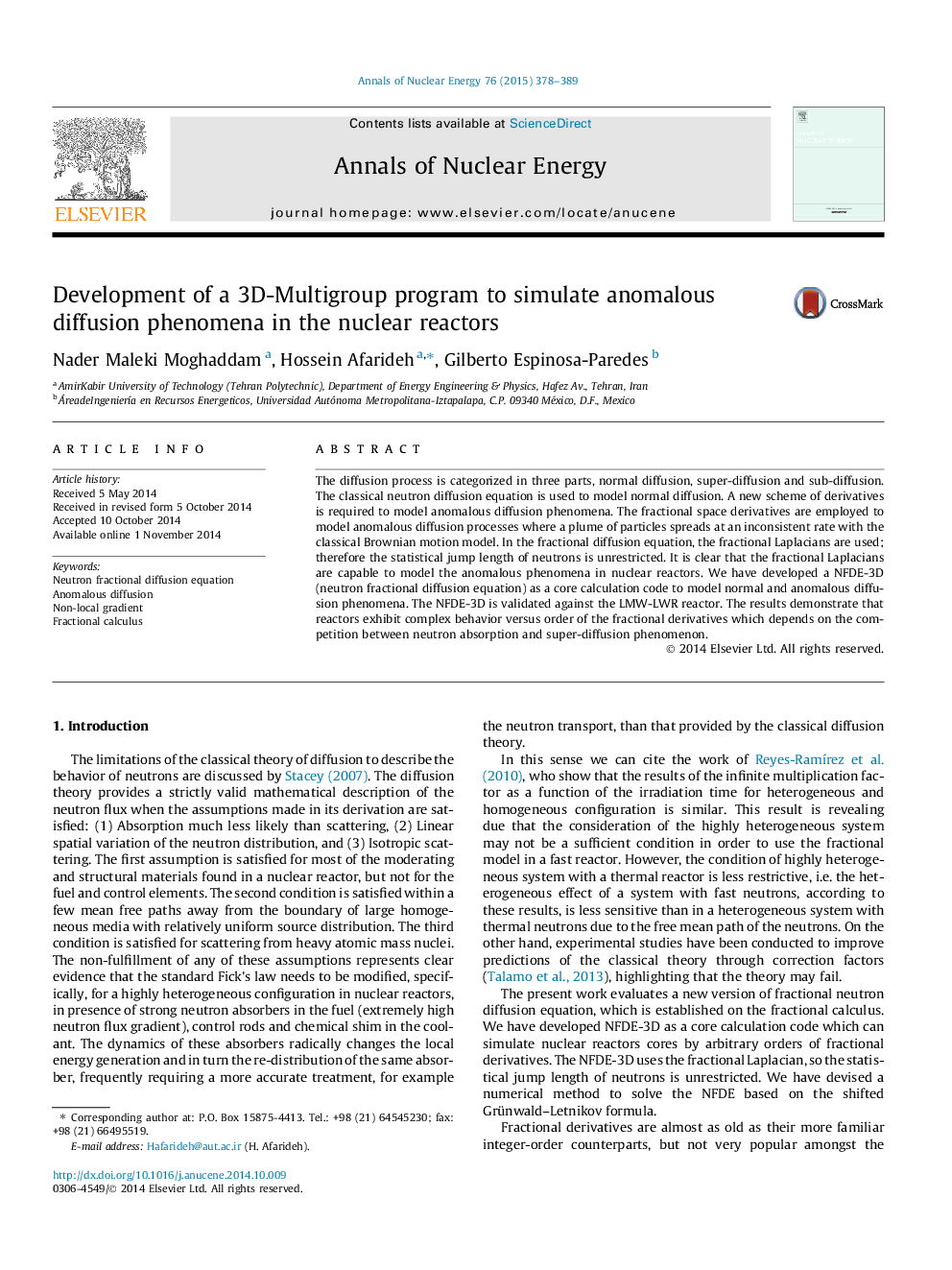| Article ID | Journal | Published Year | Pages | File Type |
|---|---|---|---|---|
| 1728205 | Annals of Nuclear Energy | 2015 | 12 Pages |
•The new version of neutron diffusion equation for simulating anomalous diffusion is presented.•Application of fractional calculus in the nuclear reactor is revealed.•A 3D-Multigroup program is developed based on the fractional operators.•The super-diffusion and sub-diffusion phenomena are modeled in the nuclear reactors core.
The diffusion process is categorized in three parts, normal diffusion, super-diffusion and sub-diffusion. The classical neutron diffusion equation is used to model normal diffusion. A new scheme of derivatives is required to model anomalous diffusion phenomena. The fractional space derivatives are employed to model anomalous diffusion processes where a plume of particles spreads at an inconsistent rate with the classical Brownian motion model. In the fractional diffusion equation, the fractional Laplacians are used; therefore the statistical jump length of neutrons is unrestricted. It is clear that the fractional Laplacians are capable to model the anomalous phenomena in nuclear reactors. We have developed a NFDE-3D (neutron fractional diffusion equation) as a core calculation code to model normal and anomalous diffusion phenomena. The NFDE-3D is validated against the LMW-LWR reactor. The results demonstrate that reactors exhibit complex behavior versus order of the fractional derivatives which depends on the competition between neutron absorption and super-diffusion phenomenon.
